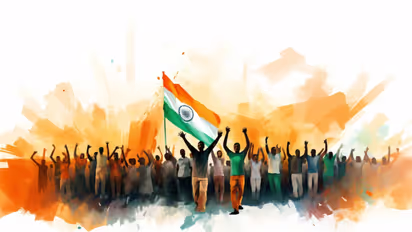Lok Sabha Elections 2024: Do you know this voting period will be 2nd longest since 1951-52 general polls?
Published : Mar 17, 2024, 12:52 PM IST
The Election Commission has announced the dates for the 2024 Lok Sabha elections, which will be spread over 44 days, making it the second-longest voting period after the first parliamentary elections of 1951-52.
Stay updated with the Breaking News Today and Latest News from across India and around the world. Get real-time updates, in-depth analysis, and comprehensive coverage of India News, World News, Indian Defence News, Kerala News, and Karnataka News. From politics to current affairs, follow every major story as it unfolds. Get real-time updates from IMD on major cities weather forecasts, including Rain alerts, Cyclone warnings, and temperature trends. Download the Asianet News Official App from the Android Play Store and iPhone App Store for accurate and timely news updates anytime, anywhere.
Read more Photos on
